Nawsabah Noor
BUET Multi-disease Heart Sound Dataset: A Comprehensive Auscultation Dataset for Developing Computer-Aided Diagnostic Systems
Sep 01, 2024Abstract:Cardiac auscultation, an integral tool in diagnosing cardiovascular diseases (CVDs), often relies on the subjective interpretation of clinicians, presenting a limitation in consistency and accuracy. Addressing this, we introduce the BUET Multi-disease Heart Sound (BMD-HS) dataset - a comprehensive and meticulously curated collection of heart sound recordings. This dataset, encompassing 864 recordings across five distinct classes of common heart sounds, represents a broad spectrum of valvular heart diseases, with a focus on diagnostically challenging cases. The standout feature of the BMD-HS dataset is its innovative multi-label annotation system, which captures a diverse range of diseases and unique disease states. This system significantly enhances the dataset's utility for developing advanced machine learning models in automated heart sound classification and diagnosis. By bridging the gap between traditional auscultation practices and contemporary data-driven diagnostic methods, the BMD-HS dataset is poised to revolutionize CVD diagnosis and management, providing an invaluable resource for the advancement of cardiac health research. The dataset is publicly available at this link: https://github.com/mHealthBuet/BMD-HS-Dataset.
A Web-based Mpox Skin Lesion Detection System Using State-of-the-art Deep Learning Models Considering Racial Diversity
Jun 25, 2023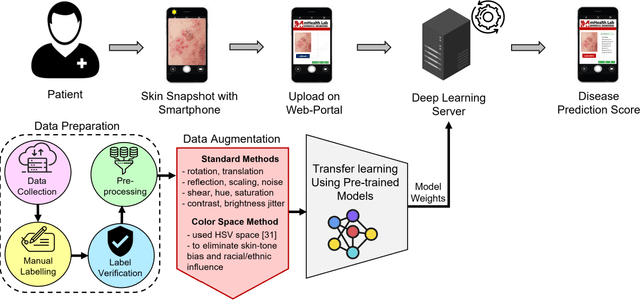
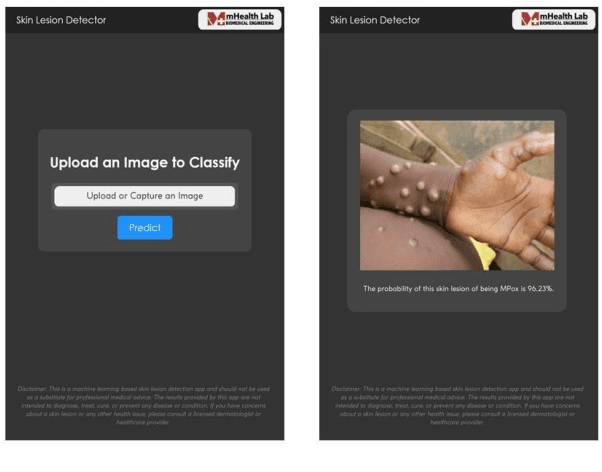
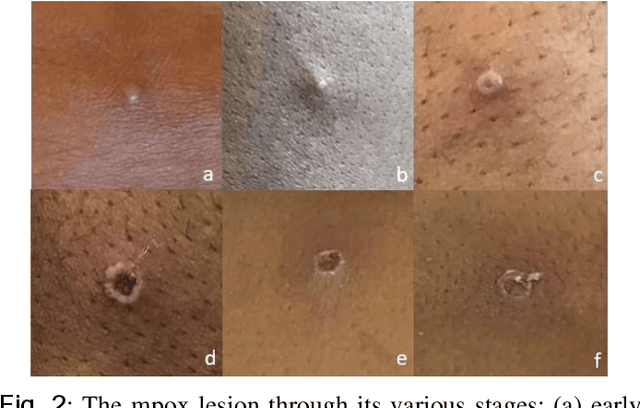
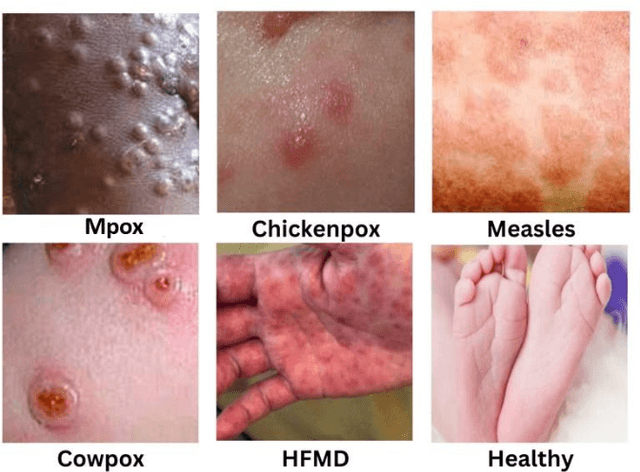
Abstract:The recent 'Mpox' outbreak, formerly known as 'Monkeypox', has become a significant public health concern and has spread to over 110 countries globally. The challenge of clinically diagnosing mpox early on is due, in part, to its similarity to other types of rashes. Computer-aided screening tools have been proven valuable in cases where Polymerase Chain Reaction (PCR) based diagnosis is not immediately available. Deep learning methods are powerful in learning complex data representations, but their efficacy largely depends on adequate training data. To address this challenge, we present the "Mpox Skin Lesion Dataset Version 2.0 (MSLD v2.0)" as a follow-up to the previously released openly accessible dataset, one of the first datasets containing mpox lesion images. This dataset contains images of patients with mpox and five other non-mpox classes (chickenpox, measles, hand-foot-mouth disease, cowpox, and healthy). We benchmark the performance of several state-of-the-art deep learning models, including VGG16, ResNet50, DenseNet121, MobileNetV2, EfficientNetB3, InceptionV3, and Xception, to classify mpox and other infectious skin diseases. In order to reduce the impact of racial bias, we utilize a color space data augmentation method to increase skin color variability during training. Additionally, by leveraging transfer learning implemented with pre-trained weights generated from the HAM10000 dataset, an extensive collection of pigmented skin lesion images, we achieved the best overall accuracy of $83.59\pm2.11\%$. Finally, the developed models are incorporated within a prototype web application to analyze uploaded skin images by a user and determine whether a subject is a suspected mpox patient.
Monkeypox Skin Lesion Detection Using Deep Learning Models: A Feasibility Study
Jul 06, 2022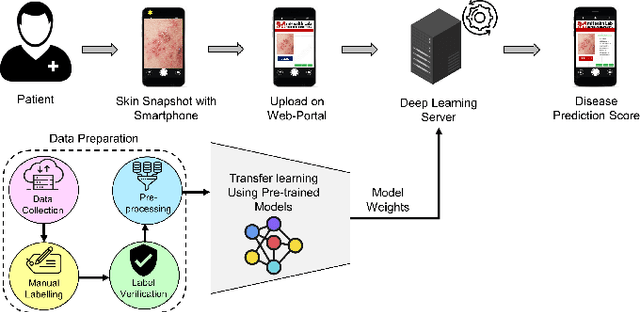
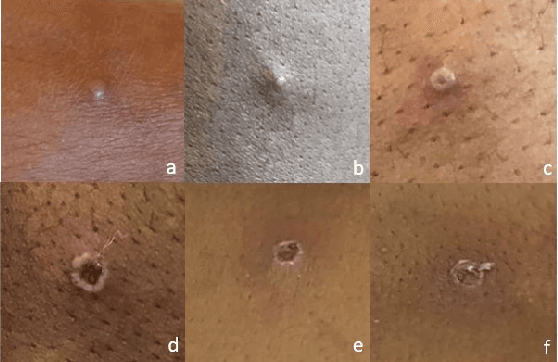
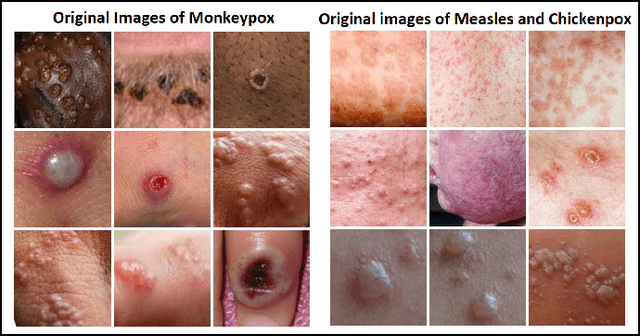
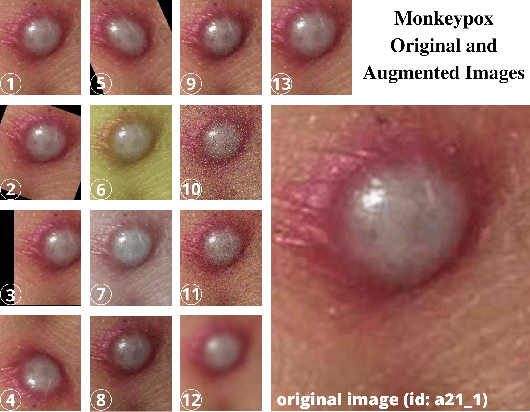
Abstract:The recent monkeypox outbreak has become a public health concern due to its rapid spread in more than 40 countries outside Africa. Clinical diagnosis of monkeypox in an early stage is challenging due to its similarity with chickenpox and measles. In cases where the confirmatory Polymerase Chain Reaction (PCR) tests are not readily available, computer-assisted detection of monkeypox lesions could be beneficial for surveillance and rapid identification of suspected cases. Deep learning methods have been found effective in the automated detection of skin lesions, provided that sufficient training examples are available. However, as of now, such datasets are not available for the monkeypox disease. In the current study, we first develop the ``Monkeypox Skin Lesion Dataset (MSLD)" consisting skin lesion images of monkeypox, chickenpox, and measles. The images are mainly collected from websites, news portals, and publicly accessible case reports. Data augmentation is used to increase the sample size, and a 3-fold cross-validation experiment is set up. In the next step, several pre-trained deep learning models, namely, VGG-16, ResNet50, and InceptionV3 are employed to classify monkeypox and other diseases. An ensemble of the three models is also developed. ResNet50 achieves the best overall accuracy of $82.96(\pm4.57\%)$, while VGG16 and the ensemble system achieved accuracies of $81.48(\pm6.87\%)$ and $79.26(\pm1.05\%)$, respectively. A prototype web-application is also developed as an online monkeypox screening tool. While the initial results on this limited dataset are promising, a larger demographically diverse dataset is required to further enhance the generalizability of these models.
 Add to Chrome
Add to Chrome Add to Firefox
Add to Firefox Add to Edge
Add to Edge